











































After midnight early Saturday, McCarthy was elected Speaker of the House in the 15th ballot between himself and Dem. Hakeem Jeffries. The 15 ballots took four days full of meetings between the House of Representatives, and over the course of the ballots, more flipped their vote. McCarthy earned
Jan. 10: Nearly 5,000 flights were delayed and almost 900 were canceled by around 10 a.m. Tuesday due to a computer outage that was lifted Wednesday. That morning, President Joe Biden said he directed the Department of Transportation to investigate. The cause of the outage is unknown.
Jan. 4: Ball State’s studentathletes recorded a 3.40 term grade point average (GPA), the department’s second-best GPA on record, behind a 3.42 GPA from the fall 2021 semester. 247 student-athletes finished the semester on the Dean’s List (a GPA of 3.5 or higher) while 78 studentathletes finished with a 4.0 GPA. 355 earned at least a 3.0 GPA.
Jan. 7: Ball State Gymnastics recorded the program’s secondbest season-opening meet score of 194.100 total in its quad meet hosted by No. 2 Florida. The Cardinals finished third in the meet, behind No. 33 West Virginia (194.925) and No. 2 Florida (197.750) while ahead of Lindenwood (193.125). Ball State stays east for a quad meet at Rutgers Jan. 14 at 2 p.m.
The Daily News offices are in AJ 278, Ball State University, Muncie, IN 47306-0481. Periodicals postage paid in Muncie, Indiana.
Call 765-285-8256 or email dailynewsads@bsu.edu between 8 a.m. to 5 p.m. Monday - Friday or visit ballstatedaily.com/advertise.


144-360), the Ball State student newspaper, publishes Thursdays during the academic year, except during semester and summer breaks. The Daily News is supported in part by an allocation from the General Fund of the university and is available free to students at various campus locations.
Call 765-285-8134 between 9 a.m. to 3 p.m. Monday - Friday. Subscription rates: $45 for one year. POSTMASTER: Send address changes to The Daily News, AJ246, Ball State University, Muncie, Indiana, 47306.
TO DONATE
Visit BallStateDailyNews.com.
JOIN THE DAILY NEWS Stop by room 278 in the Art and Journalism Building. All undergraduate majors are accepted and no prior experience is necessary.
The Ball State Daily News is committed to providing accurate news to the community. In the event we need to correct inaccurate information, you will find that printed here.
To submit a correction, email editor@bsudailynews.com.
Hi: 47º Lo: 30º
FRIDAY MOSTLY SUNNY
CLOUDY
Hi: 35º Lo: 24º
Hi: 35º Lo: 26º
PARTLY SUNNY Hi: 42º Lo: 37º



THIS WEEK: Rain returns for the Martin Luther King, Jr. Holiday on Monday as the latest west coast system arrives here. It comes with above to much above average temperatures early to the middle part of next week.
START CHECKING, FROM DAY ONE.
Waking Up with Cardinal Weather is Ball State University’s first and only morning mobile show focused on getting your ready for the day through local news, weather and lifestyle trends. Waking Up with Cardinal Weather airs every Friday morning at 8 a.m. at @cardinalwx live on Facebook.

MLK Celebration Breakfast | 9 a.m. | Student Center Cardinal Hall
MLK March | 11:30 a.m. | Student Center
MLK Speaker | 7 p.m. | Pruis Hall
Disability Services Training | 3 p.m. | Forum Room
Samuel Sirmons Speaker | 4 p.m. | Unified Media Lab, Art and Journalism Building (second floor)
Queer Monologues | 8 p.m. | Pruis Hall
19
Asian Student Union Sushi Night | 5 p.m. | Multicultural Center
HRL Habitat for Humanity Service Project | 1-4 p.m.
January 20
Latinxpalooza | 7 p.m. | Student Center Cardinal Hall
Friday Night Film Works | 9 p.m. | Pruis Hall
January 21
Beneficence Leadership Conference | 9 a.m.-3 p.m. | Student Center
Unify the Night | 8 p.m.- 2 a.m. | Student Center
January 22
Black Student Association Unity Pageant | 7 p.m. | Pruis Hall
Thin air. Colder wind gusts. Shorter days. Changes in sleeping. Increased anxiety. Social isolation. According to Healthline, an estimated 10 million Americans suffer with mental health issues associated with winter.
Seasonal affective disorder (SAD) is a mental disorder connected to the change in seasons. While all seasons can impact mental health, winter triggers SAD most often, Betsy Varner, Ball State University postdoctoral fellow, said.
“[SAD] is the cluster of symptoms that someone experiences at the onset of a certain time period during the year,” Varner said. “[SAD symptoms] come towards the end of fall, through winter and then improve in the spring and summer. It goes along with the seasons and with the weather patterns as well.”
of the U.S. population experiences seasonal depression each year.
part of dealing with the symptoms of SAD is by establishing a consistent and healthy daily routine. “College students oftentimes have a really hard time keeping a regular routine anyways because sometimes [they] have an 8 a.m. class, sometimes [they] have to stay up until 2 a.m. studying,” Varner said. “[That schedule] makes it really hard to keep [a] routine, but having a routine can be really helpful to manage some of these [SAD symptoms].”
Driscoll said having a support system on campus can greatly help with managing mental health issues like SAD. She said engaging in on-campus activities and utilizing Ball State’s Counseling Center can be where these support systems are found.
Source: Mental Health America
One aspect of winter is the sun setting an hour earlier than in the spring or summer, which can make the days seem shorter. Aubrey Driscoll, Ball State Counseling Center associate director for prevention and wellness, said sunlight has a strong impact on the body. Sunlight inhibits the production of melatonin from the pineal gland. With the lack of sunlight during the winter, people may find themselves sleepier during the day.
Burns said her depression in high school contributed to her feeling suicidal. When she talked with her mom about how she was feeling, her mom entered a suicide awareness giveaway from a dog breeder.
She and her mom drove to the breeder’s house, where Burns was surprised with a Goldendoodle puppy. Burns could decide on two different names belonging to people who died from suicide, and she picked “Skylar.” Since having Skylar, Burns said she has been getting progressively better.
Depression: misery, guilt, loss of self-esteem, hopelessness, diminished interest in activities, despair and apathy
Anxiety: tension and inability to tolerate stress
Mood changes: extremes of mood and, in some, periods of mania in spring and summer
Sleep problems: desire to oversleep and difficulty staying awake or, sometimes, disturbed sleep and early morning waking
Lethargy: fatigue and inability to carry out normal routine
[SAD] is the cluster of symptoms that someone experiences at the onset of a certain time period during the year. [SAD symptoms] come towards the end of fall, through winter and then improve in the spring and summer. It goes along with the seasons and with the weather patterns as well.”
- BETSY VARNER, Ball State postdoctoral fellowThe main age of onset of seasonal depression is between 20 and 30 years of age, however symptoms can appear earlier.
Typically, the further one is from the equator, the more at risk they are for seasonal depression.
The prevalence of seasonal depression is anywhere from 0-10 percent of the population, depending on the geographic region.
Source: Mental Health America
“It may be difficult to get out of bed, [and you] may be [finding] yourself feeling really tired or needing to sleep more often,” Varner said. “Maybe [it’s] harder to do things throughout the day and keep that energy up. Sleeping too much is definitely something that’s common, especially during the winter months where SAD is present.”
Jodie Burns, second-year Ball State visual communications major, said she has been affected by SAD for seven years. She said her SAD symptoms begin at the start of fall, and not only is her sleep affected, but she said her personal hygiene is not a huge priority during the colder months.
Driscoll said other symptoms of SAD include feeling down most of the day, losing interest in typically enjoyable activities, difficulty concentrating, feeling worthless and/or hopeless, losing or gaining appetite and, in severe cases, feeling suicidal. Driscoll said these symptoms can arise from more than just the sun or the temperature.
“In the colder months, sometimes, [these symptoms] could be due to some struggles around SAD,” Driscoll said. “But then there’s also concerns around navigating the holidays, finals and midterms.”
Burns said her academics are strongly affected by SAD because it is difficult for her to focus on her work. First semester finals occur during the middle of December, which Burns said can contribute to SAD.
“In any instance, whether you are mentally sound or not, finals take a toll on your mental state. Whether you have depression or you don’t have depression, if you have ADHD, if you have bad anxiety, if you struggle with stress,” Burns said, “[finals] can amplify anybody’s mental state to a stage of not wellbeing, but it [especially] doesn’t help with anybody who has SAD because of the stress of it all.”
Varner said college students have many things on their plates, like newfound responsibility, which can be stressful and exhausting to manage. She said
The emotional support animals who are able to go out in public in any building, where if you’re having a panic attack, [the ESA] can help lower your heart rate.”
- JODIE BURNS, Second-year Ball State visual communications major
“I really do think animals help a lot [with mental health],” Burns said. “My friend has an emotional support animal (ESA) — a cat. She’ll be crying, but she’ll be cuddling up with that cat, and it helps relieve stress. The emotional support animals who are able to go out in public in any building, where if you’re having a panic attack, [the ESA] can help lower your heart rate.”
Burns said she recommends getting an ESA, or a pet, to anyone who struggles with mental health issues.
Other ways to manage SAD symptoms, Varner said, is by being proactive and knowledgeable about how late fall and winter can impact mental
Overeating: craving for starchy and sweet foods, resulting in weight gain
Social problems: irritability and desire to avoid social contact
Source: Mental Health America
health. She said discussing potential medications and supplements with a medical provider can help battle some SAD symptom concerns.
“Setting up social support, letting friends and family know, ‘Hey, winter [is] really hard for me, and I might need some help during this time,’ [can prepare you for SAD],” Varner said. “Other things to think about would be getting as much sunlight as you can. On those rare sunny days in the winter, even though it’s cold, that sunlight really does have an effect on our bodies. Also, being able to move your body and maintaining a balanced diet helps regulate the serotonin levels in our bodies, [and it will] help regulate some of those [SAD] symptoms that come.”
Contact Maya Kim with comments at mayabeth. kim@bsu.edu or on Twitter @MayaKim03
Source:
How to recognize the “winter blues” and combat it
On a cold and windy early afternoon in Muncie, Indiana, a cluster of people wearing as much clothing as they can loiter around the entrance of the Muncie HUB. Some have open suitcases with clothes and belongings, while others have speakers playing music.
These people can’t enter the HUB, as the building is open from 8 a.m.-noon and 1-5 p.m. Monday to Friday, and during the one-hour period dedicated to cleaning and setup in between, no one seeking help can be in the building. Nevertheless, they wait outside because they have nowhere else to go.
According to the National Alliance to End Homelessness, approximately 5,625 people were “homeless on a given night” in Indiana as of 2020.
The Muncie HUB is for more extreme cases of homelessness. It gives those on the street a restroom, phone charging station and place to hang out during the day. Muncie Mission, along with numerous other local organizations, helps run Muncie HUB and additionally offers more advanced resources, such as overnight shelter, food and an addiction program. Their main building acts as a warming station, as well.
Although there are five or six warming stations in the Muncie area, Muncie Mission is the only 24-hour service, so those who wouldn’t be able to sleep in the beds provided can come and sit in the lobby, warm up with hot chocolate or coffee, charge their phone if need be, etc.
Bob Scott, vice president of development at Muncie Mission, said the Mission’s highest bed count is normally in December, January and February, as many people need a place to stay during the coldest months of the year.
Even Phi Beta Sigma, a fraternity at Ball State, recognizes the struggles the at-risk community goes through in the winter. Through their annual signature event, “Sigma Sleepout for the Homeless,” the fraternity camps out at a corner of the Scramble Light for a full 24 hours.
While those at this event have a tent, multiple donation boxes, a speaker, a firepit and much more to help them through their 25 hours outside (7 a.m.8:30 a.m. the next day), Jiale Ritter, a fourth-year natural resources and environmental management major at Ball State and Phi Beta Sigma Community Service Chairman, knows many members of the atrisk community may not have access to these things.
“Last year, it was raining when we were doing it, so we had to sleep out here in the rain, and it was freezing. It was cold, and my eyes opened a little bit more to realize that this is what people deal with every day,” Ritter said. “They don’t have the resources to be able to be like, ‘I’m just going to go home,’ or ‘I’m just going to get a hotel room.’”
Not only is cold, hazardous weather tough on
the at-risk community, but Scott said November and December are especially hard mentally for the homeless.
“The holidays add depression for people that are missing somebody in their life, for people [who] aren’t where they expected they would be,” Scott said. “That’s a real struggle. The good thing is that the holidays really bring out people [who] have compassion.”
Leigh Edwards, director of community engagement for Muncie Mission, said the shelter provided 700-900 meals to those in need on Thanksgiving, including over 400 delivered. The weekend before Christmas, Edwards said the Mission served approximately 600 meals.
However, she said it’s sad how many people signed up for the meals because it means they were likely spending the holiday alone.
“The guys that we spend time with that end up with the Mission oftentimes have burned every bridge to healthy relationships and things like that that you can imagine,” Edwards said. “When you walk in the doors of Muncie Mission, you’re in an active crisis. Our goal is to move them from that place to being in a place where they’re actively showing that they’re happy and that they’ve found purpose and that they can take care of themselves.”
The United States Interagency Council on Homelessness launched a Federal Strategic Plan to Prevent and End Homelessness in 2010, initially reporting a 10 percent drop in homelessness in the country. However, according to their website, homelessness has begun to rise again since 2016.
“In 2020, for the first time since the U.S. started collecting this data, more individuals experiencing homelessness were living on the streets and in cars than in shelters or other temporary housing, and there was an increase in the number of unsheltered families with children,” the website read.
As it pertains to Indiana, the National Alliance to End Homelessness’ website shows the rate of homelessness in the state has gone down as of late, with the rate in 2007 being 11.6 as compared to the 2020 rate of 8.4. However, those involved with Muncie organizations to help the homeless and at-risk community want to see this number continue to shrink.
“There’s definitely a need for more understanding for people that need help in our community,” Eileen Molter, director of resource development for Muncie Habitat for Humanity, said. “A lot of these people are doing the best that they can, and all they need is a hand up and then they can stand on their own two feet.”
While Molter said Habitat is not an emergency housing service, those who work for or volunteer with the nonprofit organization are involved in the process of building new housing for those who currently pay more than 30 percent of their income on housing, making it harder for them to buy groceries, take care of their families, etc.
Twice a year, Habitat sends out applications to
In November 2022, Napoleon (left), Briana (right) and their two daughters plan to move into their Habitat for Humanity home at the end of this month. Habitat for Humanity’s Muncie branch sent out 200 applications in its latest process. HABITAT FOR HUMANITY, PHOTO PROVIDED

A lot of times, I feel like we don’t take the time to appreciate the little things, and for some people, those little things are everything, so being able to do those little things truly can make someone’s day [and] can make a huge impact.”
- JALEN JONES, Vicepresident of Phi Beta Sigma
the community for those who need assistance. In the latest process, Habitat sent out 200 applications and received 60 back, both being the highest marks ever.
Although only four or five of those applicants will get into Habitat’s home ownership program, Molter said the increased number of applications around the community is a positive because it means more at-risk people are ready to take the next step and ask for help. Molter has been with Habitat for three years, and she said since the COVID-19 pandemic, Habitat has helped 37 families with house repairs or new housing.
Molter said through her brief time at Habitat, her eyes have been opened to the large need even in a community like Muncie.
“It’s easy for us to stay in our bubbles,” Molter said. “It can make us uncomfortable to think about other people that are living differently than us, but I think when we take the time to get to know our neighbor, we’ll find that we have a lot more in common than we have differences.”
A Phi Beta Sigma fraternity member raises a sign at the Scramble Light Nov. 2, 2022. The sign was used to attract people walking around Ball State University’s campus to help raise money for the Phi Beta Sigma Sleepout for the Homeless event. ZACH GONZALEZ, DN

Molter told a story about someone who has successfully gone through their home ownership program, who had never had a credit card, a driver’s license or owned a house before starting. Now, she works for Habitat.
Like Molter, Edwards said before taking the job at Muncie Mission, she was largely unaware of the size of the homeless and at-risk community in Muncie. She said through working at the Mission, she realized much of the community is in the same boat as she was.
Jalen Jones, a fourth-year business marketing major at Ball State and vice president for Phi Beta Sigma, agreed with Molter. He said through “Sigma Sleepout for the Homeless,” those in the fraternity want to make an impact on the community and create change while raising awareness.
Muncie offers organizations and methods of help for the sometimes marginalized, at-risk community.

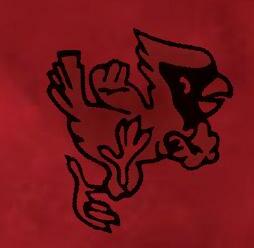














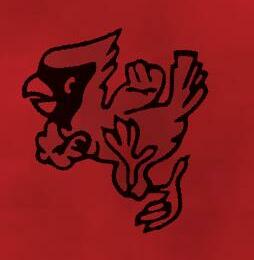

New Year’s resolutions are supposed to correlate with the renewal of the year and its seasonal cycle; new beginnings are the cue for a person to grow and change. However, despite people’s best intentions, a study performed by the International Journal of Environmental Research and Public Health found that about two-thirds of people in the U.K. and Australia gave up on their New Year’s resolutions within the first month of 2021.
Not all hope is lost, however – humans are creatures of habit. If you’re having trouble with your New Year’s resolution, forming a habit can help you find time to put the work in and achieve your goals. Here are five tips for turning a behavior into a habit.
Sometimes, the issue with a New Year’s resolution comes before you ever begin. If you define your goal as, “I am going to write a book this year,” there is very little direction to guide you in writing that book. Does it need an outline? How many chapters will it be? Do you want a first draft or an edited product? According to the American Psychological Association (APA), goals are more likely to be completed — no matter their difficulty — if their progress can be traced over time. In other words, if your goal is to “write a 1,500word chapter within a month,” it’s easier, more manageable and more fulfilling to see your word count climb to 1,500 over time rather than not completing the book and failing your resolution because it wasn’t realistic and not as measurable as it could have been.
Why do people brush their teeth in the morning when they wake up and at night before they go to bed? The true reasons are complex, but one part of it is that the action of brushing one’s teeth is attached to waking up and going to bed. According to the APA, habits built around a cue for performing an action can take weeks to break. If your goal is more of a lifestyle change than a single accomplishment, like starting an exercise regimen or beginning to meditate, try setting aside an hour or two before work or before bed to fulfill your New Year’s resolution. This way, your personal development is triggered by a cue that is part of your personal schedule.
However long it takes you to form a habit, there is no avoiding the repetition involved with rehearsing an action until it becomes reflexive. There is a real risk of getting bored of the work before it is solidified as a habit, so especially for creative pursuits, find ways to add variety to the process of building a habit. Instead of sewing a pincushion 30 times over, try turning old shirts into pillows or making a small drawstring bag. Even for resolutions like working out at the gym, break up the monotony by putting on a Netflix show while using the treadmill or the elliptical.
People are heavily influenced by the behaviors of those they associate themselves with, according to a study performed by the University of Chicago. If you let friends or loved ones join you in your New Year’s resolution, you can support each other in the endeavor, find new ways to socialize and make it even more likely you achieve your goals.
Life, as a rule, is chaotic. While it is impossible to plan ahead for unforeseen circumstances, there are ways you can keep up with your New Year’s resolutions in spite of things that can keep you from achieving what you set out to do. If your goal, for example, is to learn a new language, see how effective it is to study at different times of day. If you get called into work, you might still be able to study later at night or during work, depending on the job. The point is to be merciful with yourself and your goal — one little hiccup doesn’t have to mean the end of your resolution if you can find a way back onto the wagon.
Contact Miguel Naranjo by email at miguel. naranjo@bsu.edu or on Twitter @naranjo678.
Ball State’s Charles W. Brown Planetarium will be hosting their first shows of the year this weekend on Jan. 13-14. The shows include Tour of the Winter Sky, Saturn & Beyond and One World, One Sky: Big Bird’s Adventure. All shows are free to students and welcome to those of all ages.
The Ball State Angels for Life will be putting on a blood drive in Pruis Hall from 9 a.m.-3 p.m. on Jan. 17-18. There will be raffles, giveaways, food and $10 e-gift cards for those who donate blood. You can schedule an appointment or walk-in on the days of the drive. All donations will be going to local hospitals.
The Mindbender Mansion is coming to the Minnetrista. The exhibit is full of puzzles, brain teasers and interactive challenges that will test brain power and problem solving skills. The exhibit is free and will be from Jan. 14 through May 7. It’s open to both adults and children for the time the exhibit is there.








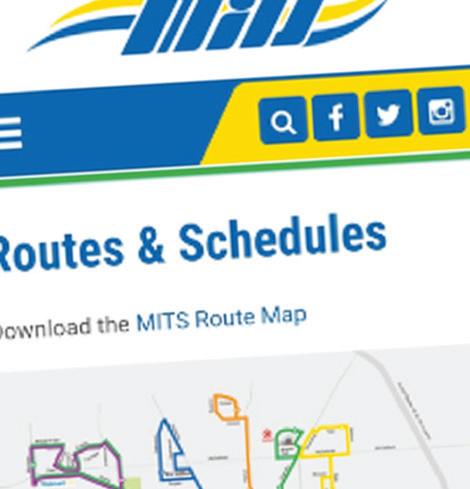











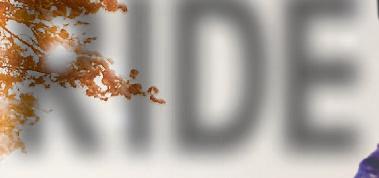





















After a stellar season under firstyear head coach Donan Cruz, who saw Ball State win the Midwestern Intercollegiate Volleyball Association (MIVA) regular season and tournament and go to the NCAA final four, the MIVA preseason poll has picked the Cardinals to repeat as the number one. Ball State received 56 votes with Loyola Chicago just two votes behind in the second.


In its first indoor meet of the 2022-23 season Dec. 10, fourth-year Charity Griffith won the long jump with a 5.71m mark while third-year Jennelle Rogers finished second at 5.69m. In addition, third-year Jennah Rogers took first in the 60-meter hurdles with an 8.78 time, a new collegiate best.
Collegiate Baseball Newspaper announced its annual preseason AllAmericans list for the 2023 season Dec. 19 with Ball State’s graduate student infielder Ryan Peltier and junior right-handed pitcher Sam Klein named to the third team list. Peltier received an ABCA/Rawlings Gold Glove for the best third baseman in NCAA baseball, while Klein was placed on the All-Mac first team as relief pitcher.


Ball State graduate Wendell Brown is releasing a book about his time in a Chinese prison.
Zach Carter ReporterWendell Brown sits in a Chinese prison cell. The cell is about 30 feet by 15 feet and has around 30 other men in it.
While sitting there, he takes out a small sheet of paper and writes down some goals to accomplish when he is released. The paper likely looked something like this:
• Start a nonprofit organization for young people.
• Write a book about being imprisoned.
• Make a film about imprisonment.
Brown now has three nonprofit organizations.
The book he wrote, “NFL To Prison Cell,” is available for pre-order.
He currently is the strength and conditioning coach and the linebackers coach at Martin Luther King Jr. High School in Detroit.

“Some of the most influential people in my life have been my coaches,” he said. “I wanted to be able to reach back to help some young people. The easiest way for me to do that is through coaching.”
Goals were accomplished, but getting there was anything but easy.
It’s been three years since Brown was released from the Chinese prison after his 2016 conviction for assault after a fight in a bar, a situation Brown has always maintained was self-defense.
Brown’s book is a project he has been working on since he was released. In it, Brown details how he made it through those desperate years behind bars.
“We were raised in the church, so we’ve always, always been heavy with scripture and belief or faith in God,” Brown said. “But you know, when you experience certain things, there are times to actually witness for yourself the power of God and to grow your connection with the highest personally.”
More than anything else, he said it was his faith that helped guide him through prison.
“Finding myself on the other side of wrongful imprisonment and knowing the tough time, conditions, the treatment before all those things,” he said. “I wouldn’t wish on anyone.”
His mother, Antoinette Brown, was one of his biggest supporters throughout the whole process.
Some of the most influential people in my life have been my coaches. I wanted to be able to reach back to help some young people. The easiest way for me to do that is through coaching.”
- WENDELL BROWN Author“I am extremely proud of my son for remaining calm and keeping his faith,” she said. “Wendell knew we were fighting for him on the outside. During the pandemic, he had time to put everything in writing. He worked hard for years to rebuild himself and tell his story.”
She and other members of the family worked with the U.S. Embassy staff to get letters regularly delivered to Wendell. The family’s efforts, and Wendell’s situation, drew the attention of several Ball State alumni.
One of these people was director and producer Matt Liston.
Liston, who has worked on programs such as ESPN’s “30 for 30” and Lebron James’s “Uninterrupted,” saw a story that someone had written about the incident, and the fellow Ball State graduate started to work.
“I reached out to his family and friends and wanted to learn the real story,” Liston said. “Once I did, I was compelled to help out. You know, I wanted to help spread awareness for Wendell. I had done some other social media campaigns and
other traditional media campaigns to help people inside the world of sports in the past, nothing on the level of Wendell, but I really felt compelled in this one.”
Liston tried to do many things to help Brown, including traveling to Washington, D.C. with Brown’s family.
“I actually went … to try to get some political support,” he said. “And then I went back to Los Angeles, and I just tried to use some of my contacts to spread the word through social media and traditional media that he needs help.”
Jason Whitlock, former Ball State football player and current sports journalist and analyst, contributed $40,000 to bring Wendell Brown home.
Brown played middle linebacker at Ball State and, after graduating, went on to get his masters in political science and public education, and he was scouted for the NFL before his time coaching in China.

Just being grateful for every second that we have. Being grateful for the freedom to be able to feel the sun on your face, to be able to feel that way and to be able to smell flowers.”
- WENDELL BROWN AuthorNot surprisingly, Brown tries to make the most of where he’s been and where he’s going.
“Just being grateful for every second that we have,” he said. “Being grateful for the freedom to be able to feel the sun on your face, to be able to feel that way and to be able to smell flowers. Or to be able to spend time with our families, to be able to have access to them with ease, you know. To not be able to have a phone call or not be able to see or have a visit, you know, and we’re such a tight-knit family, and all that’s taken away [in prison].”
After being released, Brown took speech and writing classes and listened to authors who have done this type of work to prepare for his own book.
During the writing phase, Brown’s family was a big part of the process.
“Some of the things that I was writing, and some of the conversations we went through,” he said, “they were still learning some of the things that I experienced. It was therapeutic. My family needed it as well.”
The book is currently in production and is being prepared for release. Brown hopes the pre-orders will be ready sometime soon. Every hard copy that has been pre-ordered will be autographed.
Contact Zach Carter with comments at zachary. carter@bsu.edu or on Twitter @ZachCarter85.
 Grayson Joslin Opinion Editor
Grayson Joslin Opinion Editor
Grayson Joslin is a second-year journalism major and writes for The Daily News. His views do not necessarily reflect those of the newspaper. An interest I have been fascinated with for as long as I can remember has been the design and symbolism behind a sports team’s identity. It doesn’t matter how amazing the jersey is, like the Pacers’ Flo-Jo jerseys from the 90s (my personal favorite uniforms of all time) or how putrid it is (see the Utah Jazz’s highlighter uniforms introduced earlier this year), the creation of an identity amazes me.
Getting to see the implementation of various items of cultural significance into a team’s identity is special, too. The Cleveland Guardians, taking their new name and identity from the Guardians of Traffic statues in the city, is a brilliant modern example of how an area’s identity can enhance the branding of sports teams in the area.
This naturally applies to Ball State University and its athletic teams.
Originally named the Hoosieroons, the thennamed Indiana State Normal School, Eastern Division changed its athletic identity to the Cardinals in 1927. Since then, the identity of Ball State’s athletic teams have evolved, culminating with the current athletic logo used since 1989, per a previous Daily News article.


The logo replaced another logo that had been used for over 30 years, per Chris Creamer’s Sports Logo Website. This logo, affectionately called “Dancing Charlie,” was the symbol of Ball State athletics as the Cardinals became a Division I school in football and a mid-major powerhouse in men’s basketball.
Even though the logo was sleek for 1989 standards, as time has gone on, the “Triangle Cardinal” logo (as I like to call it) has stood out like a sore thumb in a changing landscape of new
and creative visual identities for college athletics. Colleges like Oregon have been pushing the envelope for college uniforms, while Ball State has just been happy to be there, not innovating and instead sticking to the status quo.
Something changed in 2020. Before the pandemic-delayed football season kicked off, Ball State announced the Tradition line, complete with the return of Dancing Charlie, the university’s previous athletic logo. However, there was more.
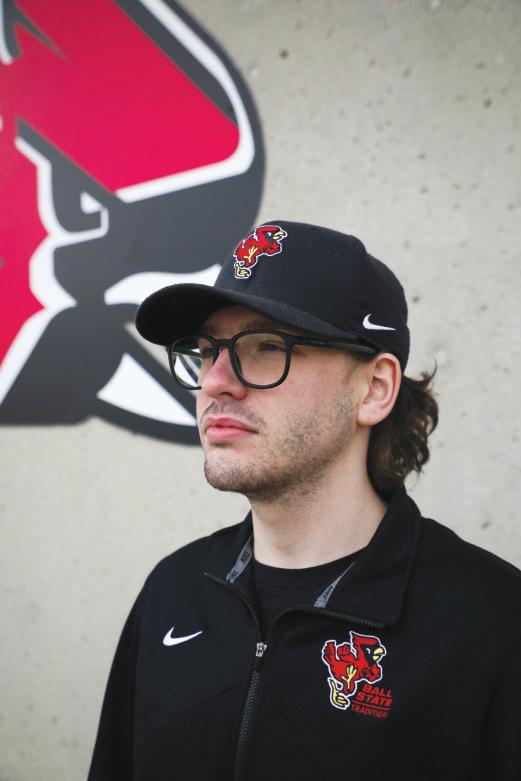
As the football team took the turf that year, Dancing Charlie adorned the helmet, remaining there for the majority of the team’s games the past three seasons. Seeing the reemergence of the oldschool Dancing Charlie got me excited.
Changing
The Dancing Charlie logo is very pleasant to look at; there is this timeliness quality to it that makes it stand out. The old-school aesthetic of the logo makes it very charming to look at.
The same can’t be said for the current Triangle Cardinal logo; it just has the aesthetic of a logo that came out of the 1980s, and unlike the good logos from the 1980s, this one has not aged well. Before the logo was slightly updated in 2015, it had cheesy motion lines above the cardinal’s head.
When announcing these subtle changes, thenathletic director Mark Sandy said, “That refreshed brand can say things are on the move, and we’re up-to-date and on the cutting edge of what people are looking for.”
I’m sorry, but even in 2015, the Triangle Cardinal was not up-to-date.
full-time
Earlier this year, Mid-American Conference rival Akron introduced its new logo set, which emphasized simplicity and modernness. Even though it was just introduced, it looks like a logo that was plucked straight from the 1950s, and it looks great.
There has been a wave of retro rebranding for college athletic teams in previous years; Tulane has been a wonderful example of a school looking back for an identity to build toward the future. The reimagining of the 1960s “Angry Wave” logo, introduced in 2016, brought new life to the Tulane athletic identity. Mid-American Conference rival Kent State brought back their 1970s helmet for a one-off in 2021.
However, just appearing on the helmets isn’t enough.
Ball State’s athletic identity is dated, and reintroducing the classic Dancing Charlie logo full-time will rejuvenate the visual identity of our Cardinals.
Ever since its resurrection, Dancing Charlie has come to represent success. In 2020, the first season of the logo on the football team’s helmets, the Cardinals won their first conference championship in 1996 and their first Bowl game in school history en route to a 23rd-place ranking in the seasonending AP Poll.
The next season saw Ball State qualify for backto-back Bowl games for only the third time in school history. Even if correlation does not equal causation, Dancing Charlie has been there during some of the most successful times for our athletic programs.
But a question is then pondered: why should we care so much about Ball State’s image and identity? An attractive athletic brand can elevate it and place it in the good graces of people. When explaining Vanderbilt’s athletic rebranding in 2022, athletic director Candice Lee said, “We have got to own [Vanderbilt’s] brand … the symbols do matter.”
Her reasoning is logical and sound; branding can contribute so much and could be the charm a group, company or sports team needs. The Dancing Charlie logo has the charm the Triangle Cardinal logo wishes it could have. It is from a bygone era, yet timeless, and it represents determination, while the Triangle Cardinal logo lacks any emotion.
Ball State has been exceptional and innovative in its education, and the university needs to transfer the charm and prestige of our education into our athletic branding; that is what makes the Dancing Charlie logo fit well with the message Ball State hopes to communicate about the university-at-large.
One of my favorite qualities of the logo is how you can tell Charlie is moving forward, and that is right on cue with how Ball State wants to be branded. Some words used in Ball State’s Brand Style Guide to communicate the “language” of the Ball State story include confident, empowered and forward-thinking. The Dancing Charlie logo communicates the image of Ball State better than the Triangle Cardinal logo ever could.
Second-year journalism major Grayson Joslin poses outside Worthen Arena Jan. 11. JACY BRADLEY, DN
And that leads me to one of the main reasons that makes the Dancing Charlie logo so brilliant: it’s different and unique. The cardinal is one of the most popular mascots, with the red bird being the 11th most popular team nickname in the United States. With most of these logos, it’s the same old song and dance, just a drawing of the head of the cardinal. College teams such as Illinois State, Louisville, Lamar and even the Arizona Cardinals of the NFL are guilty of this trend.
Dancing Charlie forgoes this trend by showing the whole body, making this logo stand out by not being just his face. Ball State needs to lend uniqueness to our nickname when it is so popular, especially since the cardinal is the state bird of Indiana.
Changing our full-time athletic logo to Dancing Charlie can be the tip of the iceberg when it comes to forging our own unique athletic identity. We can add even more sprinkles of our distinctive Ball State identity; the messaging and values of Beneficence, our motto “We Fly” and even the shirt design Richard Dreyfuss wore in “Close Encounters of the Third Kind” can add depth to our athletic branding.
The retro wave of rebranding has been in full effect recently. Teams like the Cleveland Browns and the Golden State Warriors have turned back the clocks for special retro looks, while the Arizona Coyotes and the Milwaukee Brewers have brought back past logos full-time. This wave gives teams the chance to look back at their past while creating a new identity for the future, an approach Ball State Athletics needs to take.
David Letterman has often called Ball State’s athletic teams the “fighting Cardinals.” The Dancing Charlie logo represents the tenacious spirit of our athletic teams, and it deserves a second life as our primary athletic logo.
Contact Grayson Joslin with comments at Grayson.joslin@bsu.edu or on Twitter @GraysonMJoslin.
our
athletic logo to Dancing Charlie can be the tip of the iceberg when it comes to forging our own unique, athletic identity.”Joslin Opinion Editor




Grayson Joslin is a second-year journalism major and writes “Soapbox” for The Daily News. His views do not necessarily reflect those of the newspaper.
One of my favorite books I read in high school was Tom Brokaw’s “The Greatest Generation.”
The news anchor’s 1998 book detailed the generation that grew up in the worst economic depression in the history of the United States, then served in World War II, fighting for the freedom of the world.
One quote that always stood out to me the first time reading it, and still does today, is “a common lament of the World War II generation is the absence today of personal responsibility.”
The group of people the Greatest Generation
was referring to was Generation X as they were entering their adulthood; however, this quote about the absence of personal responsibility could be used in criticism of Generation Z.
Gen Z is my generation, the people born from 1997 to 2012, per the Pew Research Center. We have grown up in a world shaped by the War on Terror, the Great Recession, the COVID-19 pandemic and ongoing climate change. We are the first generation that has been raised by the Internet, a tool that has helped us connect with other Gen Zers across the globe.
This generation has already, in its young days, crafted its own image and its own energy. Like previous generations, we have picked up the trend of activism. Just like the Baby Boomers protesting against Vietnam and Millennials with the Occupy movement, Gen Z has given its youthful energy to these protests in support of the environment and


against the numerous school shootings that have plagued this generation.

Gen Z is doing it because the fate of our earth depends on it; we are living in a cross-section where we are playing a dangerous game with nuclear winter and hastening the effects of climate change if we do not change our ways. Gen Z has the weight of the world on their shoulders, and I believe we will be able to help make humanity not only survive but thrive for generations to come.
The oldest members of Gen Z are beginning adulthood, with some even being elected to public office; Maxwell Frost (D-FL) is the first member of Gen Z to be elected to Congress. Despite the new blood coming into Washington, the previous Congress is one of the oldest in the history of our country, with the average senator being 64 and the average representative being 58, despite the average age of the nation being around 39 years
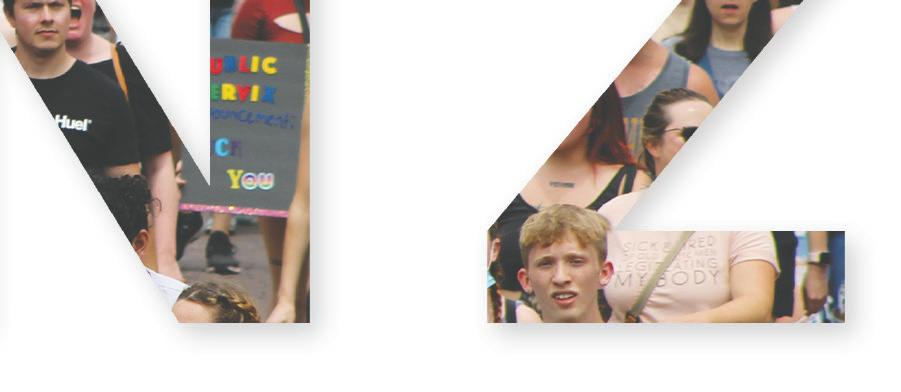


Gen Z is the generation that can either save or destroy life on Earth.Grayson
old, according to the Census Bureau.
The age difference between those in power and those in Everytown, USA, is startling and shocking. Those like 80-year-olds Joe Biden and Mitch McConnell are still in some of the most powerful positions in this country, despite being double the age of the average American. A CBS News poll found three-fourths of people, across party lines and demographics, favor maximum age limits for elected officials. Almost half of those respondents said more young people elected in politics would make politics better.
There are many problems when it comes to our country, and finding the roots of these problems will be instrumental in implementing solutions for them. Due to the advantage that incumbents have, this makes it very difficult for any opposition to mount a successful campaign against them. Having the old guard stand down will allow for new people with unique viewpoints to come in and serve the role of policymaker.
Some decisions made in previous years by the federal government, such as the Dobbs decision by the Supreme Court, overturning Roe v. Wade and the constitutional right of abortion, have gone against the American public’s opinion. Gen Z must lead the vanguard to put people in Congress that actually represent America’s views, not America’s views of a bygone era.
For this to happen, Gen Z needs to take the initiative and vote at the polls. Young voters casting a ballot increased for last year’s midterm election, with AP VoteCast forecasting nearly one in eight voters were younger than 30. This shows that the 2020 presidential election was not a fluke, which had over half of 18 to 24-year-olds casting their ballot, according to the Census Bureau.
Even though the younger portion of the American population is still the worst when it comes to voter turnout, with the highest being 65 to 74-year-olds, according to the Census Bureau, it shows that our generation is more politically motivated than previous young voters. A Pew Research Study in 2020 found 70 percent of Gen Z wants the government to solve problems rather than businesses.
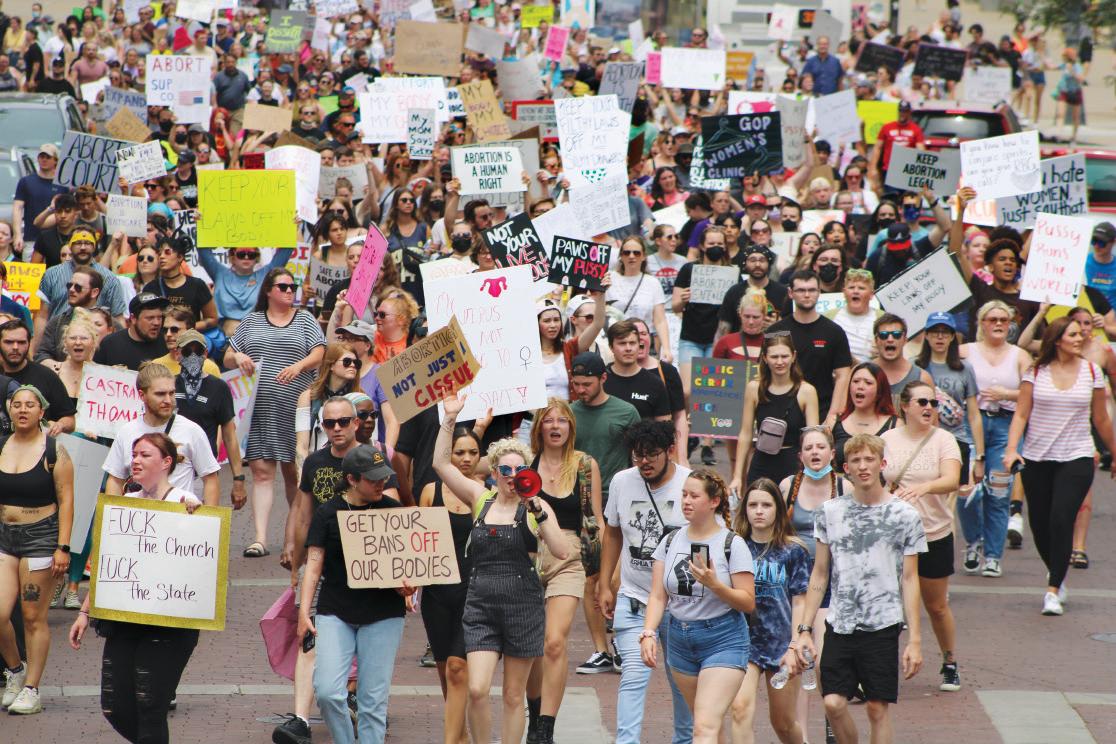
The truth is businesses and people do not have the resources and the might that our federal government has; some of us look toward our government to give us answers and to give us hope, and our government needs to give hope for Gen Z. The rule of our government comes from the consent of the governed, and 70 percent of Gen Z wants our government to help us with our problems.
However, the biggest issue that faces Gen Z and ultimately every person on this earth is the future
Indiana residents marched from the Statehouse towards downtown monument circle a day after Roe v. Wade was overturned by the Supreme Court in June 2022.


DN
of our environment, and it’s one example of how Gen Z is able to make a difference.
The United Nations Intergovernmental Panel on Climate Change (IPCC) announced in April 2022 limiting warming to 2.7 degrees Fahrenheit would require greenhouse gas emissions to be reduced by 43 percent in the next seven years. We are in a race against time to protect our planet from the destruction we have created due to our advancements in industrial technology.
Gen Z has been crucial in environmental activism over the previous few years, and among those that have helped galvanize Gen Z has been Greta Thunberg. Her fiery, no-nonsense attitude has caused the School Strike for Climate to grow in popularity since Thunberg started her journey in 2018.
This also shows the political power and potential Gen Z has, even in our early age. Seventy percent of Gen Zers are involved in a social or political cause, Edelman found last December. This increased awareness and understanding about our world and how we can wield our power for better change.
The sense of imperativeness in which we need to act to save our environment cannot be understated. With each passing day, we continue to put our earth in a chokehold full of plastic and greenhouse gasses, causing species to go extinct.
Drastic measures need to be taken fast; however, global governments are taking a Sunday stroll when deciding to take these measures.
When the IPCC announced their latest findings, they emphasized that all emissions could be halved by 2020. However, the biggest change to us saving this planet is the human condition of apathy. A recent study from the American Psychological Association found those who were less emotional had less concern for the environment.
Humanity needs to make sacrifices to help facilitate action to help protect our environment — we have made some, however it is not enough. Gen Z, with our energy and motivation, can become the spokespeople for saving our environment. We must do whatever we can to help convince people older than us to be selfless and sacrifice some of their convenience for the betterment of humanity.
I see high hopes for our generation. We are more caring and emphatic than those before us. We look for the most sensible and realistic option. Gen Z is in it for the long haul, which means we must find a way to help save us from ourselves.
Contact Grayson Joslin with comments at Grayson.joslin@bsu.edu or on Twitter @ GraysonMJoslin.
ANGELICA GONZALEZ MORALES,and abortiwason-right protesters had dueling opinions. ANGELICA GONZALEZ MORALES, DN
Gen Z has the weight of the world on their shoulders, and I believe that we will be able to help make humanity not only survive but thrive for generations to come.”
Gen Z, with our energy and motivation, can become the spokespeople for saving our environment.”
“A lot of times, I feel like we don’t take the time to appreciate the little things, and for some people, those little things are everything,” Jones said, “so being able to do those little things truly can make someone’s day [and] can make a huge impact.”
Edwards, who volunteered at the Mission for eight years before taking the position she currently holds as of three months ago, feels impact is being realized at the Mission.
“I think at the core of it, that holistic concept where we are walking with them every day and seeing them as people first, and then helping them to know that there is an answer, that there are solutions and that there is a path for them, has really been impactful,” Edwards said.
Kristin Freehill, volunteer coordinator for Habitat for Humanity, said volunteer numbers in 2022 are up 45 percent from 2021, highlighting the increased support from the community. She is from Muncie and summed up the city’s willingness to support with one word: “grit,” tracing it back to the manufacturing roots of the city.
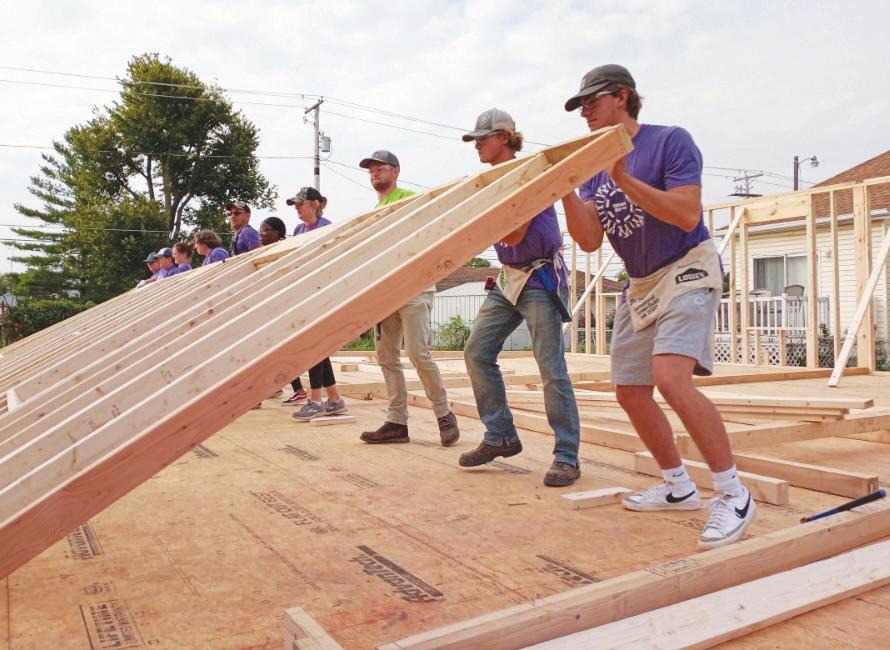
“I think we’ve seen the effects of collective impact and collaborative work in the nonprofit space and serving the community,” Freehill said. “No matter how many organizations we have doing that work, it’s never enough to really serve the community’s needs. There’s always a need there.”
“... I’ve seen people cry. It’s complete gratitude.”








Scott has been around the Muncie area almost his whole life, other than a college education in Lafayette at Purdue University and a 10-year stay in Illinois. Since taking his position at the Mission in 2019, Scott has seen his perspective change like Edwards, Molter and Ritter. That said, he has seen opioid and drug addiction as the source of problems for many members of the at-risk communities.
“There are people that, I think, if they were able to be sober [and] clean for a little while, … they can hold down jobs, and there’s jobs to be had, and they’re needed in the workforce,” Scott said. “All of the components are there, but they have to want to live that kind of lifestyle instead of an addictive lifestyle, and addiction holds you. That’s the power of it, even though you might know there’s a better path for you over here or a different path for you, you can’t pull yourself away.”
While the Muncie Mission used to just be an emergency service for at-risk men, a place where they could find shelter and something to eat, now the Mission has a 12-step addiction program. Since the program began six years ago, none of the men who have recovered and are in transitional housing have relapsed and fallen back into addiction.
While this addiction program has reaped many benefits for those who are in successful recovery, there are many challenges that come with it. Scott said residents who consistently stay and have COVID-19 present a problem, though one they try to address as best they can by following COVID-19 protocols. That said, the Mission does offer a free health clinic.
Additionally, Scott said sometimes people come into the Mission off the street smelling like alcohol, marijuana, etc., and these people can’t be around those going through the addiction program, due to risk of setback.

There are places to get help, there are places to get food, there are places to get clothing [and] places to get shelter. This safety net of support, I feel like it’s pretty robust in our community.”
Jared Martin, fourth-year social work major at Ball State in his third year with Phi Beta Sigma, said during his time involved with the fraternity, he has been able to see reactions from those being served by Muncie Mission and other organizations they donate the money and resources from this event to. He said these organizations especially don’t expect to get so much support from students.
“It’s very humbling because it teaches you to have empathy for those people, so that makes you grind to make sure that you’re raising the money, so that we can give it to those people,” Martin said.
Outside of the addiction program, Scott mentioned a few other things Muncie doesn’t have the resources to help with, including couples who are homeless, as most shelters/organizations are men’s or women’s only, and those at-risk with pets, because oftentimes organizations can’t take care of animals. However, to address other needs that are tough to meet, a 24-hour crisis center is being developed as a part of IU Health at Ball Memorial Hospital. Scott said this should help more with those members of the at-risk community who may be at risk of harming others, etc.
Scott said people from other communities come to the Mission seeking help because surrounding areas may not have as adequate of a support system. He feels the Mission, along with other local organizations, make Muncie a notable destination for those in the at-risk or homeless community seeking help.

“There are places to get help, there are places to get food, there are places to get clothing [and] places to get shelter,” Scott said. “This safety net of support, I feel like it’s pretty robust in our community.”
Contact Kyle Smedley with comments via email at kyle.smedley@bsu.edu or on Twitter @ smedley1932.













